Disclosure: This article contains affiliate links. We may earn a commission from purchases at no extra cost to you, which helps our travel content.
The ancient terraced vineyards of Portugal's Douro Valley unfold like living poetry carved into mountainsides—a testament to generations who have shaped this UNESCO World Heritage landscape through centuries of devotion. My grandmother would often speak of such places as having baraka—divine blessing that flows through the land itself. After my burnout three years ago working with refugee families in Marseille, I found myself drawn to this valley not just for its renowned wines, but for the ancestral wisdom preserved in its family-owned quintas. The Douro offers something increasingly rare: a destination where transportation itself becomes part of the healing journey, where moving through the landscape—whether by historic train, gentle river cruise, or winding mountain road—connects you to centuries of cultural heritage. For families seeking both adventure and authentic connection, understanding how to navigate this valley unlocks experiences that remain invisible to those who rush through on standard day trips.
The Soul-Stirring Train Journey: Porto to Pocinho
The Linha do Douro railway isn't merely transportation—it's a portal through time and consciousness. This historic line, completed in 1887, hugs the northern bank of the Douro River for 160km between Porto and Pocinho, offering what many consider Europe's most beautiful train journey.
My first experience on this route came after weeks of exhaustion from documenting traditional healing practices in Morocco's Atlas Mountains. As the train pulled away from Porto's São Bento station—its blue azulejo tiles already a promise of beauty to come—I felt the weight of urban life begin to dissolve. The transformation happens gradually: first the industrial outskirts, then the river appears, widening and narrowing as if breathing with the land.
Past Régua, where most day-trippers turn back, the true magic unfolds. The train slows around bends carved through sheer rock, offering heart-stopping glimpses of terraced vineyards that seem to defy gravity. Small stations appear like apparitions—Pinhão with its stunning tile murals depicting harvest scenes, Tua nestled where a tributary joins the main river, places where time moves to different rhythms.
For families traveling with children, this journey offers natural entertainment far more meaningful than digital distractions. My friend's daughters spent the entire journey with faces pressed to windows, counting tunnels (there are 26!), spotting tiny white quintas perched impossibly on hillsides, and waving to fishermen tending their nets below.
To truly experience this journey, I recommend bringing a travel journal to document observations and impressions. The gentle rocking of the train creates a meditative space for reflection, and children especially enjoy creating their own illustrated journey diaries.
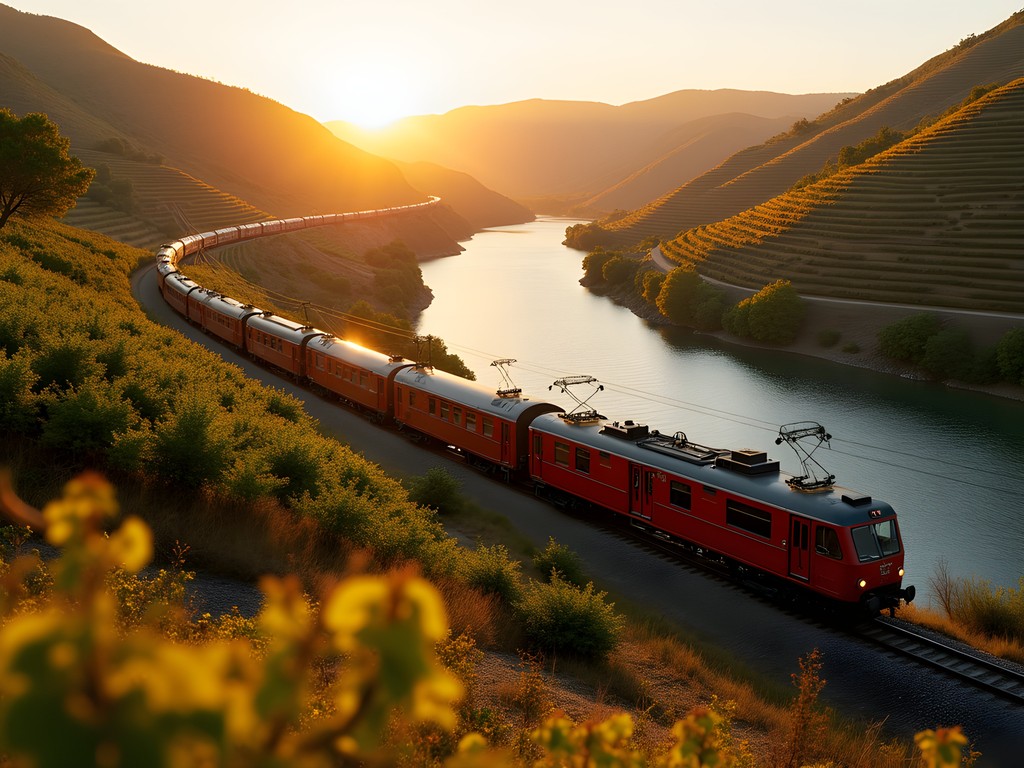
💡 Pro Tips
- Purchase tickets in advance during high season (summer months) as seats sell out quickly
- Sit on the right side heading eastbound for the best river views
- The complete Porto-Pocinho journey takes about 3.5 hours each way—consider breaking your journey with overnight stays
River Cruises: Connecting with the Douro's Lifeblood
There's an old saying in the Douro that the river is the valley's soul. After experiencing both land and water journeys here, I'm convinced this is profoundly true. While trains offer panoramic perspectives, it's on the water where you truly understand how the river has shaped not just the landscape but the entire cultural identity of the region.
Traditional rabelo boats once transported wine barrels from valley estates to Porto's cellars—a treacherous journey before the river was tamed by dams in the 1970s and 80s. Today's cruise options range from intimate two-hour excursions to multi-day journeys with overnight stops.
For families, I recommend the mid-range day cruises departing from Pinhão rather than the longer cruises from Porto. These shorter journeys provide the perfect balance of engagement without overtaxing younger travelers' patience. My sister's children, normally restless after an hour in any vehicle, remained entranced for the entire journey—spotting herons fishing in shallow waters, waving to grape harvesters on impossibly steep terraces, and listening wide-eyed to tales of the river's wilder days.
What struck me most was how the perspective from water level reveals secrets invisible from the road: ancient stone markers denoting historic quinta boundaries, small riverside chapels where boatmen once prayed for safe passage, and irrigation systems dating back to Moorish times.
Many cruises include stops at family-owned quintas where traditional winemaking methods endure. At Quinta do Tedo, while adults sampled organic wines, I watched the owner's grandmother teaching children how to identify medicinal herbs growing alongside vineyard paths—knowledge passed through generations much like my own grandmother's remedies.
For comfortable river journeys, especially during summer months, I always pack a wide-brimmed hat for sun protection, as the reflection from water intensifies exposure.

💡 Pro Tips
- Book river cruises 2-3 days in advance during high season
- Morning cruises typically offer calmer water and better light for photography
- Many cruise operators offer family discounts—always ask when booking
Family-Friendly Road Trips: Freedom to Explore Hidden Corners
While public transportation in the Douro offers spectacular experiences, there's undeniable magic in having the freedom to explore at your own pace. The N-222 between Régua and Pinhão has been named one of the world's most beautiful driving routes, but it's the unmarked side roads climbing into the hills that reveal the valley's most authentic treasures.
During my third visit to the region, I rented a car for a week to document traditional folk healing practices still preserved in remote villages. What began as research evolved into one of the most meaningful family experiences when my cousin and her children joined me midway through the journey.
With children in tow, we discovered that the Douro transforms into an open-air classroom. At Miradouro de Casal de Loivos viewpoint, my young cousins learned about contour farming and sustainability while gazing down at the river's dramatic hairpin bend. In the village of Provesende, where time seems suspended, they played traditional games with local children while the adults shared stories in the central square.
Navigating these winding roads requires patience and confidence, particularly on the narrower rural routes where you might encounter farm vehicles or flocks of sheep. A portable GPS with offline maps proved invaluable in areas where mobile signals disappeared around mountain bends.
The true advantage of self-driving is access to family-owned farms practicing sustainable agriculture alongside wine production. At Quinta de Covela, while sampling their biodynamic wines, we learned how ancient Roman agricultural techniques are being revived to combat climate change—knowledge that resonates deeply with my interest in traditional practices that offer solutions to modern challenges.
For families with younger children, plan shorter driving days interspersed with activities: olive oil tastings where kids can press their own samples, picnics beside ancient stone cisterns, or walks through orange groves where farmers are happy to share fruit with respectful visitors.
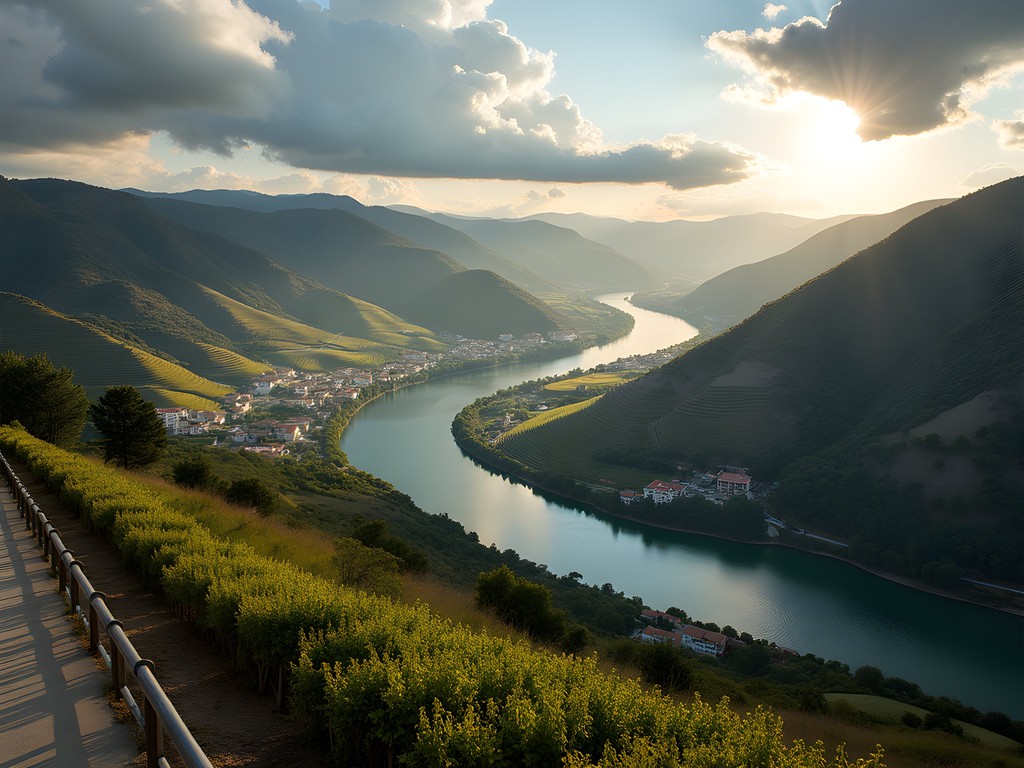

💡 Pro Tips
- Rent a car with good power for hill climbs—the smallest economy models struggle on steeper roads
- Download offline maps before departure as cellular coverage is inconsistent in remote areas
- Plan no more than 2-3 hours of actual driving per day to allow for spontaneous stops
Public Bus Networks: The Local Experience
For travelers seeking authentic cultural immersion, the regional bus network offers windows into daily valley life that remain invisible to those traveling by more touristic means. These services primarily connect working communities rather than visitor hotspots, following routes established through generations of use.
The first time I boarded a local UTAD bus from Vila Real to Sabrosa, I was the only non-resident passenger. An elderly woman carrying a basket of fresh herbs noticed my interest in her collection and spent the journey explaining their medicinal properties—knowledge remarkably similar to remedies my Algerian grandmother once prepared. These spontaneous exchanges happen naturally when traveling as locals do.
For families accustomed to precise scheduling, the regional bus system requires adjustment. Timetables exist more as suggestions than rigid commitments, especially in remote areas where a single driver might know every passenger by name and wait for someone running late. This flexibility—frustrating if you're rushing but charming when embraced—reflects the valley's unhurried relationship with time.
The primary bus operators are UTAD and Rodonorte, with services connecting major towns like Vila Real, Régua, Lamego, and Pinhão. Smaller villages might see only 1-2 buses daily, often timed around school schedules or market days. Always verify current schedules locally, as online information can be outdated.
When traveling with children on public buses, I've found locals extraordinarily accommodating—offering seats, sharing snacks, and engaging curious young travelers in conversation. My friend's daughter still corresponds with an elderly weaver she met during a bus journey to Tabuaço, who taught her simple Portuguese phrases and showed her hand-movements for traditional weaving patterns.
For comfortable bus journeys with family, I recommend bringing a compact backpack that can hold water bottles, snacks, and layers for changing mountain weather while leaving hands free for assisting children on and off vehicles.
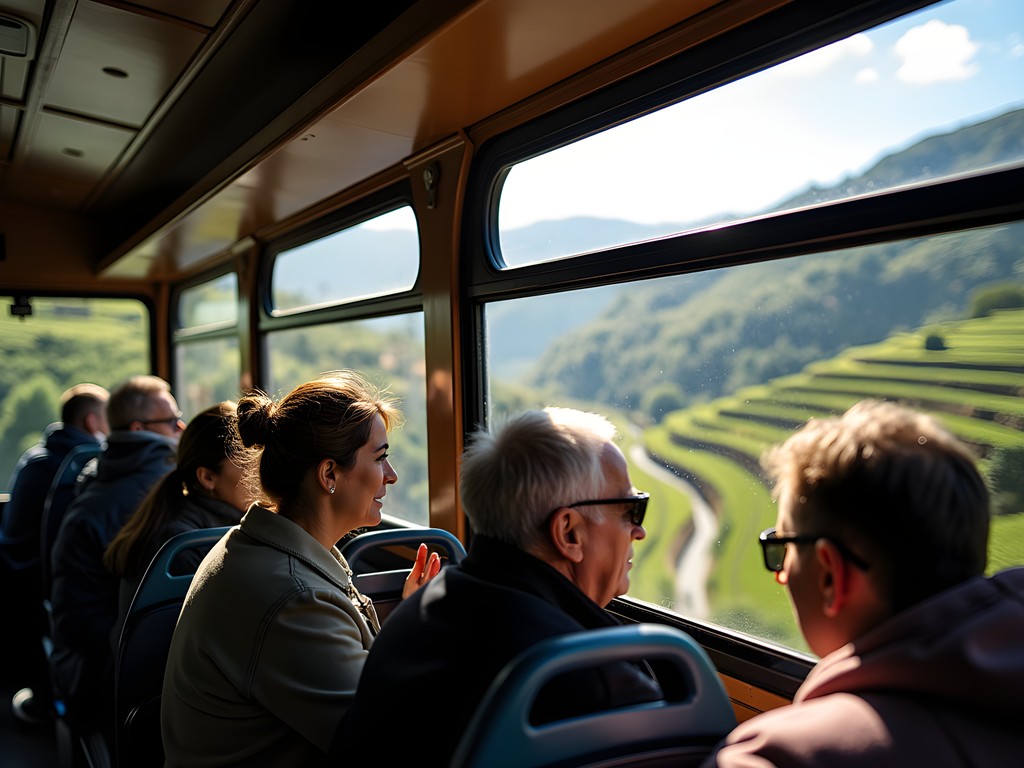
💡 Pro Tips
- Purchase bus tickets directly from drivers with cash (small bills preferred)
- Learn basic Portuguese phrases—most rural drivers don't speak English
- Sit near the front to signal to the driver that you need information about stops
Sustainable Mobility: Bicycle Routes and Walking Paths
In a region where some of the most profound cultural knowledge remains rooted in connection to the land, exploring the Douro Valley through human-powered movement creates unique opportunities for deeper understanding. The valley's growing network of cycling routes and walking paths offers families ways to experience the landscape's subtle details while teaching children about sustainable travel.
The relatively flat riverside paths between Pinhão and Tua provide excellent family cycling opportunities, while more challenging routes climb to panoramic viewpoints that reward effort with breathtaking vistas. Local outfitters like Portugal Best Cycling offer bike rentals with child seats, trailers, and appropriately-sized bikes for older children.
Walking paths range from gentle vineyard strolls to more demanding schist paths that have connected communities for centuries. The 8km path between Pinhão and Provesende follows ancient routes used by vineyard workers, passing shrines where travelers once left offerings for safe journeys—places still holding spiritual significance for local elders.
During my documentation of traditional ecological knowledge in the region, I discovered that walking these paths with local guides reveals layers of understanding impossible to access otherwise. Near Ervedosa do Douro, an elderly farmer pointed out wild herbs growing alongside vineyard walls that his family has used for generations to treat common ailments—plants I would have passed without noticing despite my interest in traditional medicine.
For families, these slower journeys create natural opportunities for children to engage with the environment. My nephew spent hours collecting different shaped leaves along the path to São João da Pesqueira, creating a nature journal that became his most treasured souvenir. The physical engagement with landscape—feeling the changing temperature as you move between sun and shade, smelling the distinct aromas of different vegetation zones, hearing the varied birdsongs in different habitats—creates multisensory memories far more lasting than passive observation.
For comfortable walking experiences, especially on uneven terrain, I recommend hiking poles which provide stability on steeper sections and can be adjusted for different family members' heights.
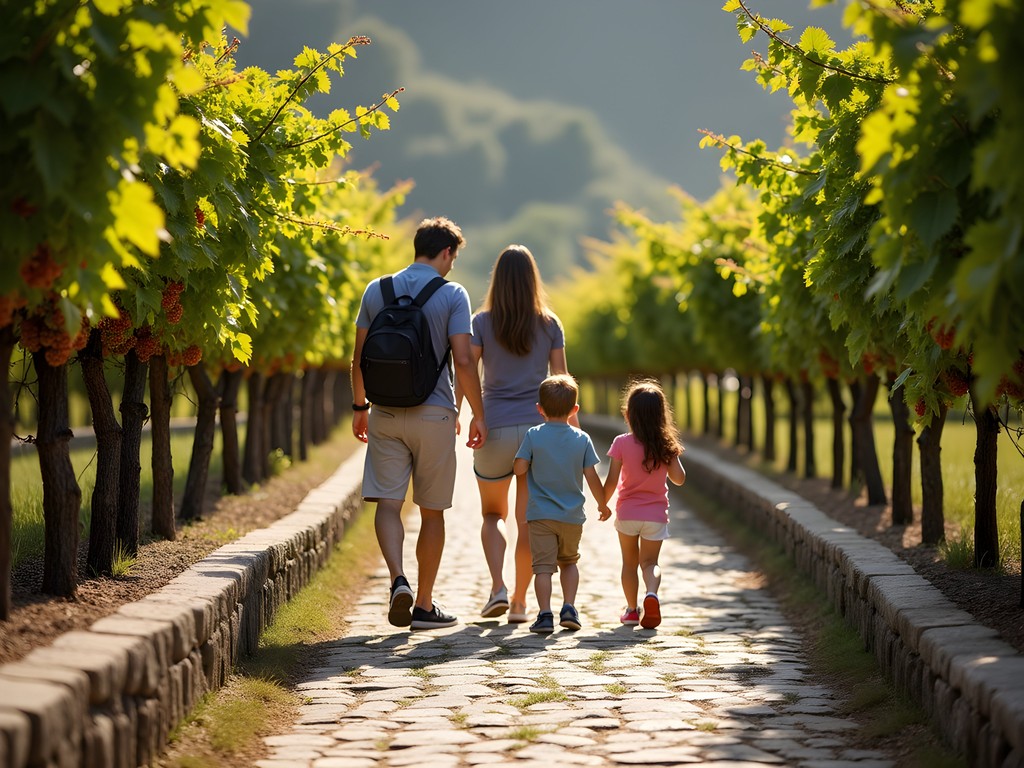
💡 Pro Tips
- Start early morning or late afternoon to avoid midday heat, especially when cycling with children
- Carry more water than you think necessary—the dry climate and elevation changes increase hydration needs
- Download trail maps to offline devices as cell coverage is unreliable in many areas
Final Thoughts
As I sit writing these final notes at a small café in Pinhão, watching the evening light transform the river from silver to gold, I'm reminded that in the Douro Valley, transportation transcends mere functionality—it becomes a gateway to understanding. Each mode of movement reveals different layers of this complex cultural landscape: trains connect you to historical narratives, boats to the river's soul, cars to hidden corners, buses to daily rhythms, and walking paths to the land's ancient wisdom. For families seeking meaningful connections, the journey truly becomes the destination here. I encourage you to mix transportation methods throughout your stay, allowing each to reveal its unique perspective. The Douro doesn't surrender its deepest treasures to those who rush—like the wines it produces, its richest experiences emerge slowly, rewarding patience and thoughtful exploration. May your journeys through this valley bring not just beautiful photographs, but moments of genuine connection to a landscape and people who understand that some forms of wealth can only be measured in relationships, knowledge, and stories passed between generations.
✨ Key Takeaways
- Combine multiple transport methods for the richest experience of the Douro Valley
- Allow extra time in your itinerary for spontaneous discoveries and connections
- Engage with local residents during your journeys for deeper cultural understanding
- Consider transportation as part of the experience rather than just means to destinations
📋 Practical Information
Best Time to Visit
Spring (April-June) and Fall (September-October) offer pleasant temperatures and either blossoming vines or harvest activities. Summer is beautiful but can be extremely hot for active exploration.
Budget Estimate
€100-150 per day per person for transportation, accommodation, and meals
Recommended Duration
Minimum 5 days, ideally 7-10 days to experience different regions of the valley
Difficulty Level
Easy To Moderate, Depending On Chosen Activities And Mobility Needs
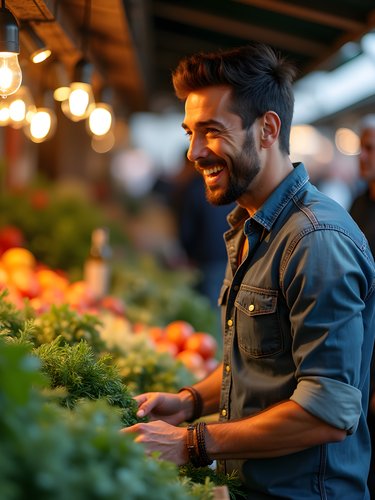
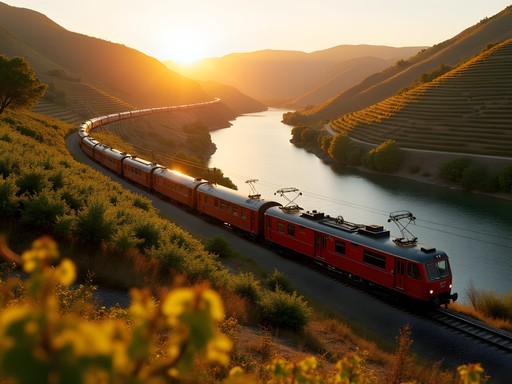
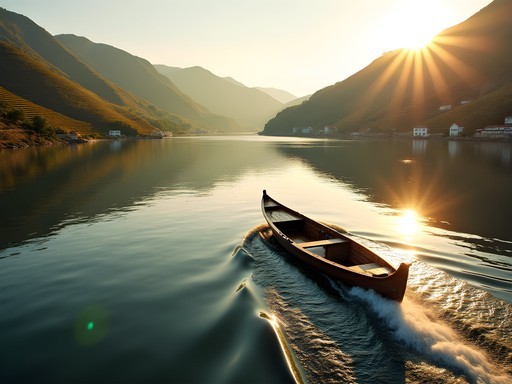
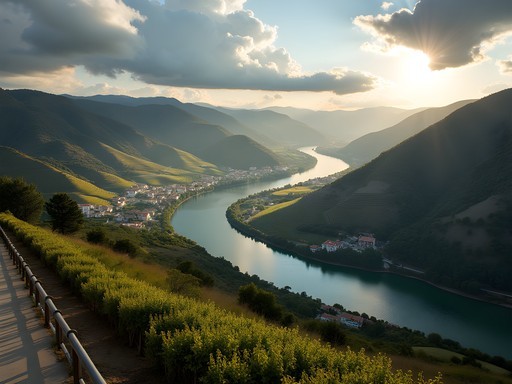
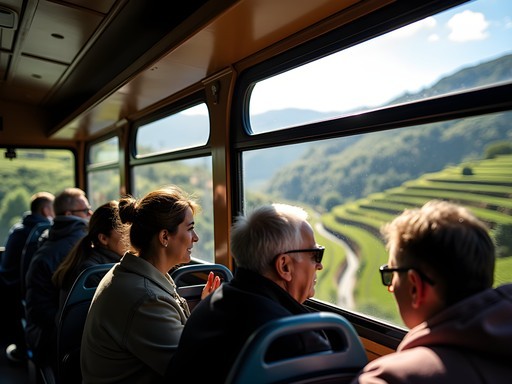
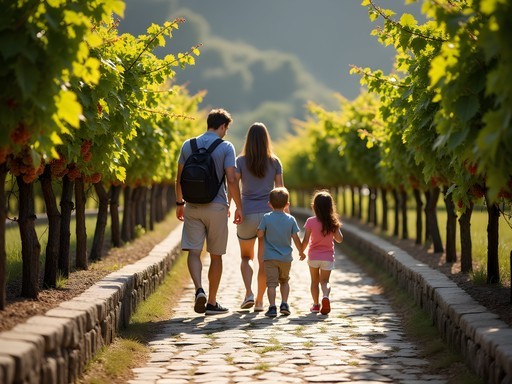


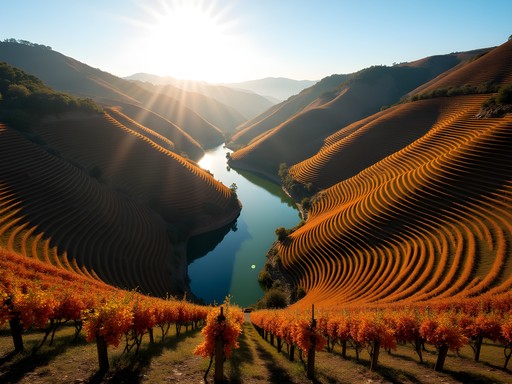




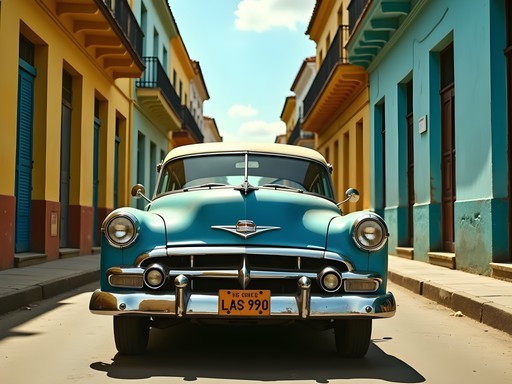

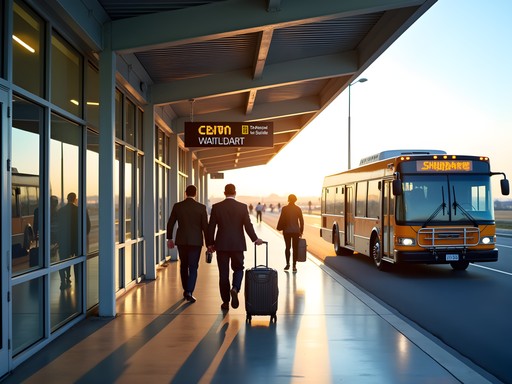
Comments
AdventureSeeker
That train journey looks incredible! Added to my bucket list!
TravelingDad
Is the bus system reliable enough with kids? Thinking of taking my 7 and 10 year olds but worried about transfers.
PortoExplorer
We did it with our kids (8 and 11) last summer. The buses were fine but schedules can be limited. I'd recommend staying in Pinhão as a base - that way you're not rushing for the last bus back to Porto.
TravelingDad
Thanks for the tip! Pinhão sounds perfect.
Kimberly Murphy
Brilliant transport guide, Liam! I took your advice and did the road trip option with my family last month. Those winding roads are not for the faint-hearted but SO worth it for the freedom to stop at the smaller quintas! We found this tiny family-run winery near Tabuaço that wasn't on any tourist map. The GPS signal got spotty in some valleys though - I had downloaded the offline maps which saved us multiple times when Google Maps failed. That café in Pinhão you mentioned at the end? I think I sat at the exact same table watching the sunset! Pure magic.
WineLover22
Those hidden quintas are the best! Did you try the Touriga Nacional at any of them? It's my favorite Portuguese varietal.
Kimberly Murphy
Absolutely! The Touriga Nacional was stunning - especially from the smaller producers. So much more character than what gets exported!
sunnyzone
Great guide! We're planning a trip to Douro Valley next spring. How crowded do the trains get during high season? Wondering if we need to book in advance or if we can just show up?
Kimberly Murphy
Not Liam, but I did the train journey last summer! Definitely book ahead for the scenic Porto-Pocinho route, especially if you want those window seats for the river views. The morning trains filled up fast!
sunnyzone
Thanks Kimberly! Good to know. Did you do any of the river cruises too?
Kimberly Murphy
Yes! Did a half-day cruise from Pinhão and it was magical! Much more relaxing than the train and you get right up close to those terraced vineyards. Worth every euro!
blueway
We did the river cruise from Pinhão last spring and it was AMAZING! The perspective from the water is completely different than from land. Our captain was this older local guy who pointed out all these tiny details about the quintas we passed that we would have missed otherwise. Definitely worth splurging on a smaller boat tour rather than the bigger tourist cruises if you can. The wine tasting at Quinta do Seixo afterward was the perfect end to the day!
exploreace
Great guide! Is October a good time to visit the Douro Valley? Wondering about harvest season and if the river cruises still run then?
Liam Mohamed
October is actually one of the best times to visit! You might catch the tail end of harvest season (depends on the year), and the colors of the valley are stunning as autumn begins. River cruises definitely still run, and the weather is usually perfect - warm days, cool evenings. Enjoy!
exploreace
That's perfect, thanks Liam! Going to book for October then.
Hunter Thompson
Brilliant write-up, Liam! I did the Porto to Pocinho train last summer and it was absolutely magical. The way the tracks hug the river, sometimes feeling like you're floating on water itself! For anyone planning this journey, I'd add that bringing a picnic for the trip is a must - the regional cheese and bread from Porto's Bolhão Market made our journey perfect. We hopped off at Pinhão for a night at a small quinta and then continued on the next day. One thing to note - the train can get quite warm in summer months, so dress in layers. I documented the whole adventure on my blog with loads of photos if anyone wants more visual inspiration!
blueway
Just checked out your blog - those sunset photos from the train are incredible! What camera do you use?
Hunter Thompson
Thanks mate! Just using my trusty mirrorless camera with the kit lens. The light in the valley does all the work honestly!
vacationpro
This is exactly what I needed! Heading to Portugal next month and the Douro Valley is high on my list.
Hunter Thompson
You're in for a treat! The train journey is absolutely stunning. Make sure you sit on the right side heading from Porto for the best river views!
vacationpro
Thanks for the tip! Will definitely book a window seat on the right side.
Haley Hamilton
Liam, this guide brought back all the memories! I backpacked through Portugal last year and spent 3 glorious days in the Douro. That train journey is hands-down one of Europe's most scenic routes - I actually met an elderly Portuguese gentleman who shared his homemade wine with me while pointing out all the quintas along the way! For anyone planning a trip, I'd add that combining the train one way and a river cruise back creates the perfect day. Also, don't miss the smaller villages beyond the main stops - I found that's where the real magic happens. I tracked everything with my travel journal which now sits proudly on my bookshelf as one of my favorite travel memories.
freewanderer
Thanks for the tip about combining train + river cruise! Did you need to book the cruise in advance or could you just show up?
Haley Hamilton
In peak season (June-Sept), definitely book ahead! But in shoulder seasons you can often book just a day before. The 1-hour cruises are easier to get last-minute than the full-day ones.
portugallover
We did the public transportation too and it was great. So much cheaper than guided tours!
springbuddy
Did you find the bus schedules reliable? We had a couple of no-shows during our trip.
portugallover
Mixed experience - fine on weekdays but weekend service was spotty. Train was super reliable though!
Venture X
Premium card with 2X miles, $300 travel credit, Priority Pass